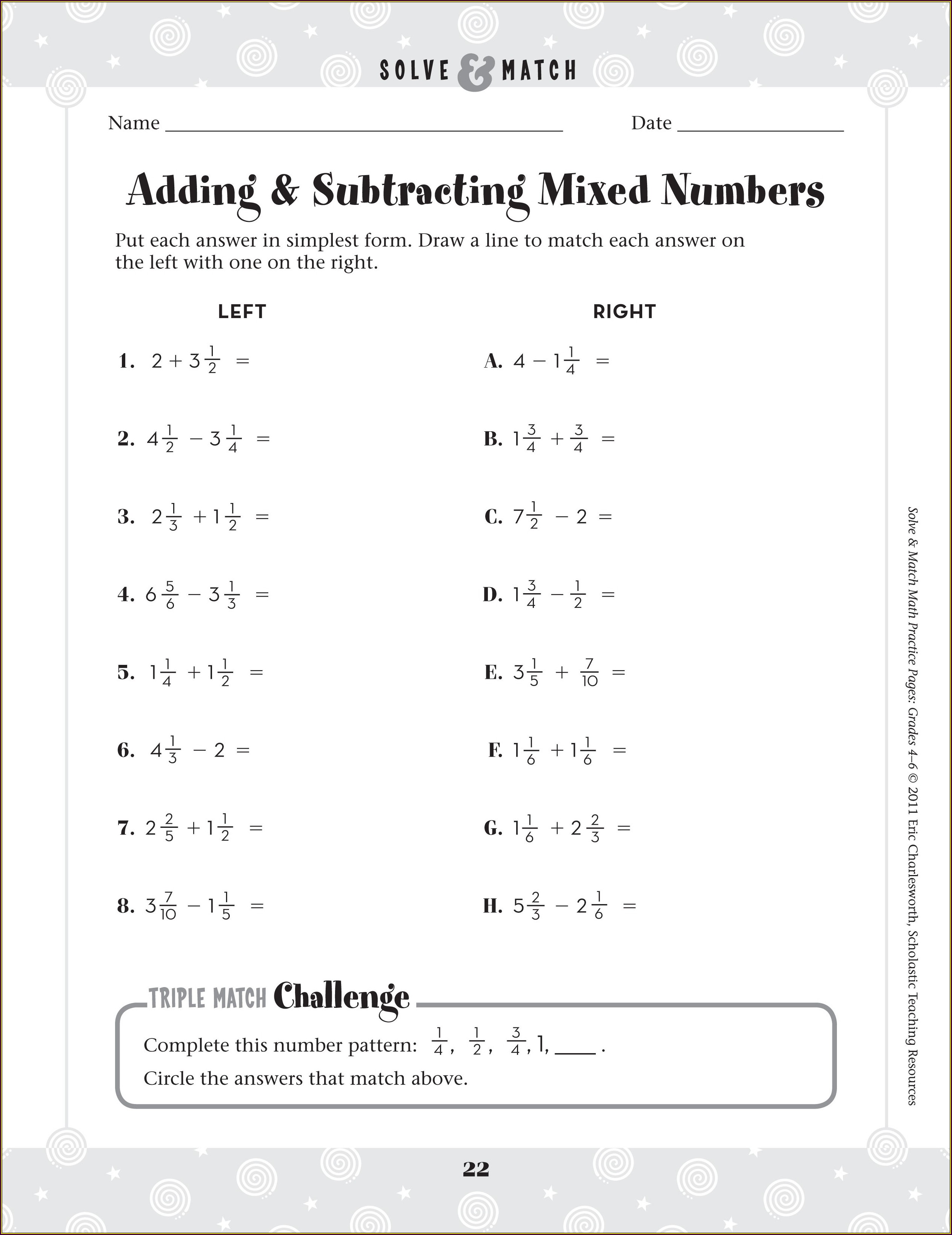Mixed Number Mayhem: Conquering the Chaos of Addition and Subtraction
Ever found yourself staring blankly at a recipe, trying to figure out how much flour you need after already pouring in half a cup? Or maybe you’re building a bookshelf and need to precisely calculate the length of each shelf, which inevitably involves fractions of inches. Welcome to the sometimes perplexing, yet utterly essential, world of mixed number addition and subtraction.
Mixed numbers – those combinations of whole numbers and fractions – are everywhere in practical life. They represent quantities that aren't quite whole, yet more than just a fraction. Grasping their manipulation is crucial for a multitude of tasks, from cooking and baking to construction and engineering. So, how do we navigate this mixed-up mathematical landscape?
While the concept might seem straightforward, adding and subtracting mixed numbers can present some unexpected hurdles. Unlike simply adding or subtracting whole numbers, dealing with mixed numbers requires a bit more finesse. We need to consider both the whole number part and the fractional part, and sometimes, things get… messy. Improper fractions, common denominators – the whole shebang can feel overwhelming. But fear not, mastering these operations is entirely within your reach.
The historical use of mixed numbers goes way back, evolving from ancient civilizations' needs to represent measurements and quantities that weren't easily expressed by whole numbers alone. Egyptians, Babylonians, and Greeks all wrestled with representing parts of a whole, eventually developing systems that paved the way for our modern understanding of fractions and mixed numbers. The importance of these concepts then, as now, lay in their practicality – allowing for precise calculations essential for trade, construction, and everyday life.
Let's break down the basics. A mixed number combines a whole number with a fraction. For instance, 2 1/2 represents two whole units and half of another unit. Adding and subtracting these numbers involves dealing with both the whole and fractional parts separately, and often requires finding common denominators to combine the fractions. This process can sometimes lead to improper fractions, which then need to be simplified back into mixed numbers, further adding to the computational complexity.
One benefit of mastering mixed number calculations is the ability to confidently tackle real-world problems. For example, imagine doubling a recipe that calls for 1 3/4 cups of flour. Adding 1 3/4 + 1 3/4 gets you the correct amount. Another benefit lies in enhancing your overall number sense and understanding of fractions. Working with mixed numbers strengthens your ability to visualize and manipulate quantities, a valuable skill in many areas of life. Finally, strong mixed number skills build a solid foundation for more advanced mathematical concepts, such as algebra and calculus.
To add or subtract mixed numbers, follow these steps: 1. Convert mixed numbers to improper fractions. 2. Find a common denominator if the fractions have different denominators. 3. Add or subtract the numerators, keeping the denominator the same. 4. Simplify the resulting fraction and convert back to a mixed number if necessary.
Checklist: 1. Did I convert to improper fractions? 2. Did I find a common denominator? 3. Did I simplify the final answer?
Example: 2 1/2 + 1 1/4 = 5/2 + 5/4 = 10/4 + 5/4 = 15/4 = 3 3/4
Advantages and Disadvantages of Working with Mixed Numbers
| Advantages | Disadvantages |
|---|---|
| Intuitive for representing real-world quantities | Can be cumbersome for calculations |
Best Practice: Always simplify your final answer.
Real Example: Baking a cake requires 2 1/2 cups of flour and 1 1/4 cups of sugar. The total dry ingredients is 3 3/4 cups.
Challenge: Finding common denominators can be tricky. Solution: Review least common multiple concepts.
FAQ: What is a mixed number? A mixed number combines a whole number and a fraction.
Tips: Practice regularly to improve your speed and accuracy.
In conclusion, adding and subtracting mixed numbers is a fundamental mathematical skill with broad applications in everyday life. From adjusting recipes to undertaking home improvement projects, the ability to confidently manipulate these quantities is undeniably valuable. While the process might present some initial challenges, mastering the techniques through consistent practice empowers you to tackle real-world problems with ease. Understanding the historical context and inherent importance of mixed numbers further solidifies their significance in our mathematical toolkit. By embracing these mixed-up numbers and honing your skills, you open doors to greater mathematical fluency and a deeper appreciation for the practical power of fractions. So, dive in, conquer the chaos, and transform those mixed number muddles into moments of mathematical mastery. Start practicing today and unlock a whole new level of numerical confidence!
Maximize your engines performance with the right spark plug
Unleash the love a guide to hilarious dog valentines memes
Tiktok branding the power of a png logo














